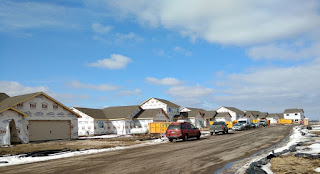[Review a summary of the draft ADEQ Industrial Stormwater Permit]
All facilities that require permit coverage are required to submit a permit application (Notice of Intent, or NOI) to ADEQ; an NOI needs to be submitted even for facilities that were previously covered by the old permit.
Some key changes in the new permit compared to the previous permit are the additional of sector-specific requirements for each of 30 different sectors.
Click on a sector below to review proposed sector specific requirements:
Arizona DEQ SWPPP Requirements for Sector A - Timber Products
Arizona DEQ SWPPP Requirements for Sector B - Paper and Allied Products Manufacturing
Arizona DEQ SWPPP Requirements for Sector C - Chemical and Allied Products Manufacturing
Arizona DEQ SWPPP Requirements for Sector D - Asphalt Paving and Roofing Materials and Lubricant Manufacturing
Arizona DEQ SWPPP Requirements for Sector E - Glass, Clay, Cement, Concrete, and Gypsum Products
Arizona DEQ SWPPP Requirements for Sector F - Primary Metals
Arizona DEQ SWPPP Requirements for Sector G - Metal Mining
Arizona DEQ SWPPP Requirements for Sector H - Coal Mining
Arizona DEQ SWPPP Requirements for Sector I - Oil and Gas Extraction and Refining
Arizona DEQ SWPPP Requirements for Sector J - Mineral Mining
Arizona DEQ SWPPP Requirements for Sector K - Hazardous Waste Treatment, Storage, or Disposal Facilities
Arizona DEQ SWPPP Requirements for Sector L - Landfills, Land Application Sites, and Open Dumps
Arizona DEQ SWPPP Requirements for Sector M - Automobile Salvage Yards
Arizona DEQ SWPPP Requirements for Sector N - Scrap Recycling and Waste Recycling Facilities
Arizona DEQ SWPPP Requirements for Sector O - Steam Electric Generating Facilities
Arizona DEQ SWPPP Requirements for Sector P - Land Transportation and Warehousing
Arizona DEQ SWPPP Requirements for Sector Q - Water Transportation
Arizona DEQ SWPPP Requirements for Sector R - Ship and Boat Building and Repair Yards
Arizona DEQ SWPPP Requirements for Sector S - Air Transportation Facilities
Arizona DEQ SWPPP Requirements for Sector T - Treatment Works
Arizona DEQ SWPPP Requirements for Sector U - Food and Kindred Product
Arizona DEQ SWPPP Requirements for Sector V - Textile Mills, Apparel, and Other Fabric Products
Arizona DEQ SWPPP Requirements for Sector W - Furniture and Fixtures
Arizona DEQ SWPPP Requirements for Sector X - Printing and Publishing
Arizona DEQ SWPPP Requirements for Sector Y - Rubber, Miscellaneous Plastic Products, and Miscellaneous Manufacturing Industries
Arizona DEQ SWPPP Requirements for Sector Z - Leather Tanning and Finishing
Arizona DEQ SWPPP Requirements for Sector AA - Fabricated Metal Products
Arizona DEQ SWPPP Requirements for Sector AB - Transportation Equipment, Industrial and Commercial Machinery
Arizona DEQ SWPPP Requirements for Sector AC - Electronic and Electrical Equipment and Components
[Read more about ADEQ stormwater monitoring requirements and industrial stormwater benchmarks]
Caltha LLP provides expert consulting services to public and private sector clients in Arizona to address Stormwater Permitting & Regulatory Support, Stormwater Pollution Prevention Plans (SWPPP), Stormwater Monitoring and Stormwater Training.
For further information contact Caltha LLP at
info@calthacompany.com or Caltha LLP Website

